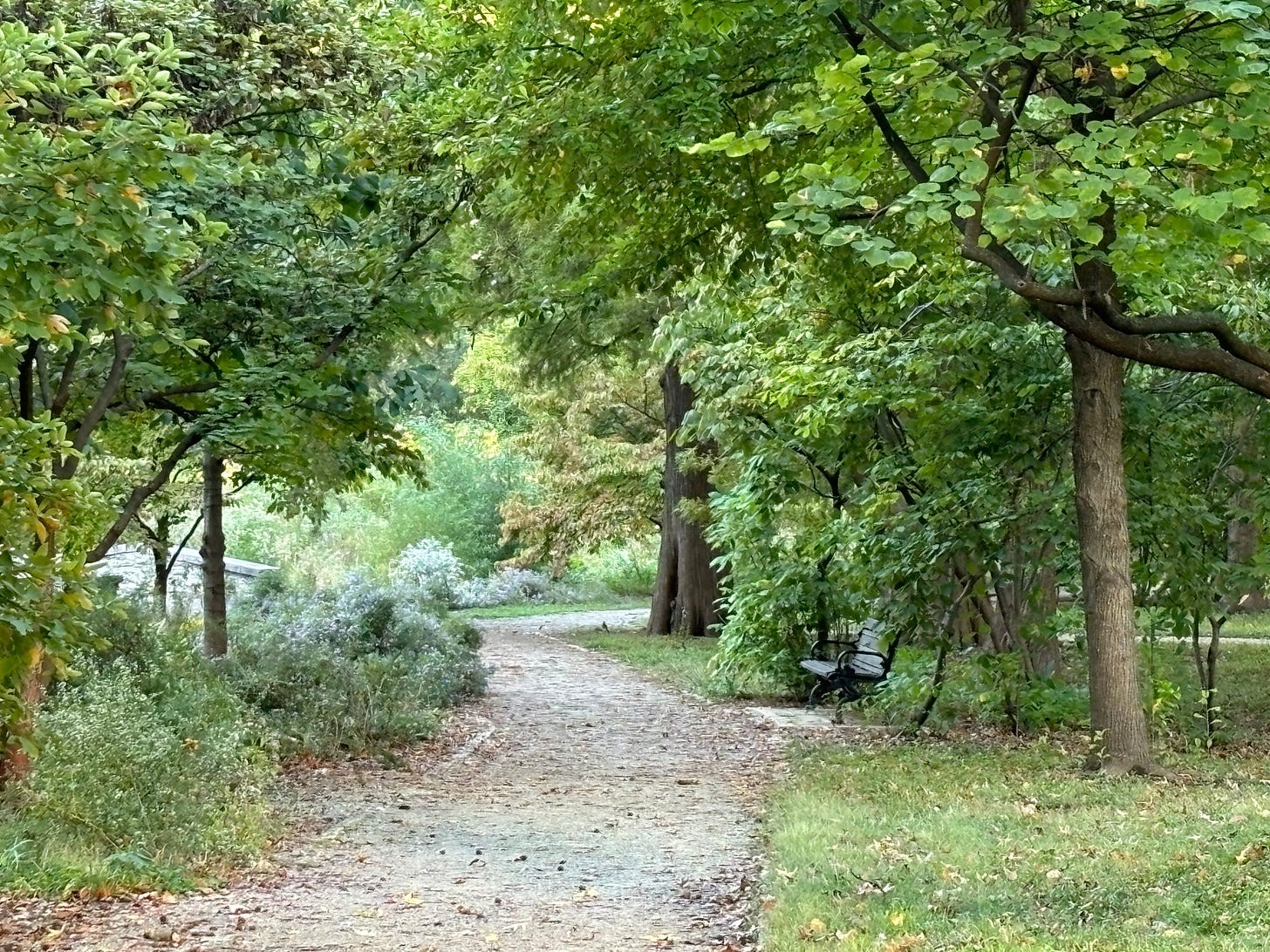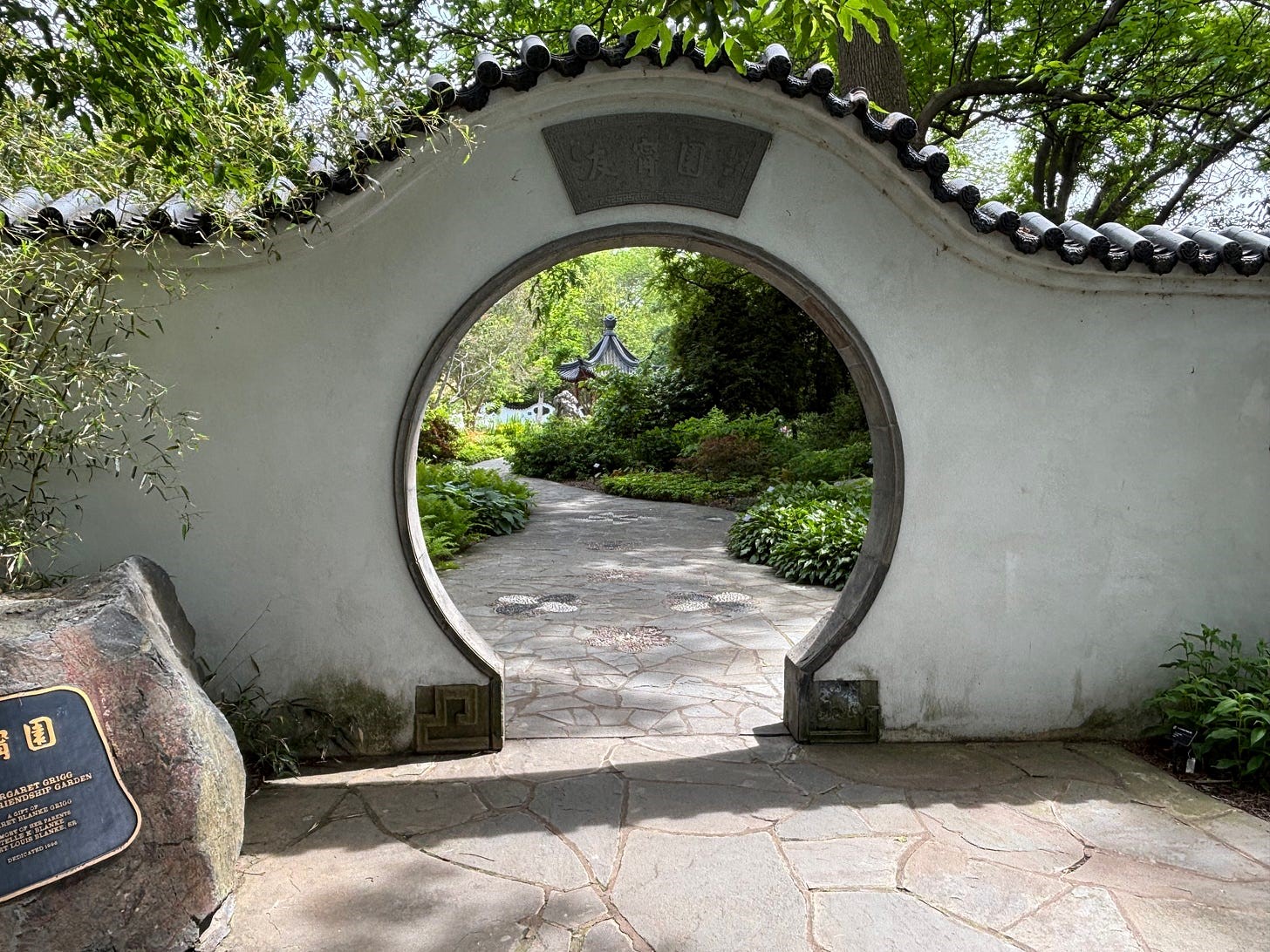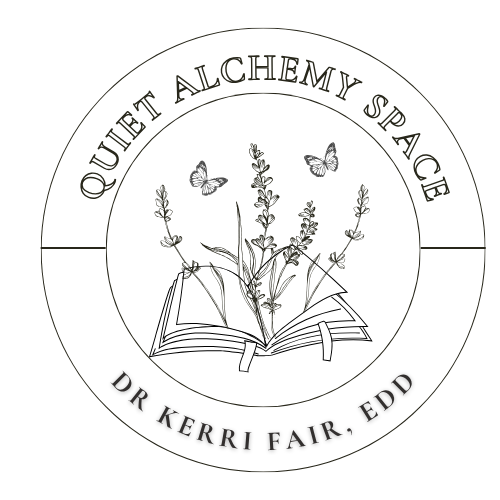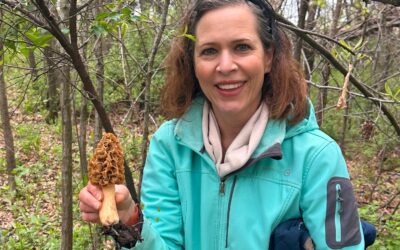“Thoroughly unprepared, we take the step into the afternoon of life. Worse still, we take this step with the false presupposition that our truths and our ideals will serve us as going forward. But we cannot live the afternoon of life according to the program of life’s morning, for what was great in the morning will be little at evening and what in the morning was true, at evening will have become a lie.” ~Carl Jung, Modern Man in Search of a Soul, Page 111.
I’ve been sitting with this Jung quote for weeks now, and it keeps showing up in my thoughts at the most unexpected moments. There’s something both unsettling and liberating about his words, isn’t there? This idea that the truths that carried us through our twenties and thirties might not be the ones we
need now. The experience, ideas, and skills we have been collecting may not be significant to us later in life?
I think about how I used to approach creativity in my earlier years. I always had this sense that I needed to have it all figured out before I began, that I should know where something was leading before I took the first step. Actually, I still feel that way in my professional life. But what if that’s exactly the kind of “morning thinking” that Jung suggests we need to release?
What night it look like to step into this afternoon of life with curiosity and openness. Without expectations. To let what’s calling to me actually unfold and reveal itself to me in its own time. Maybe that’s what midlife creativity is
really about. We don’t have to have all the answers, but just enough bravery, vulnerability, and willingness to pursuit new opportunities.

The Day3 Prompt
What possibility or idea has been calling to you or have you been curious about? What would it take to move forward with it? How might doing so bring more joy to your life?
As I unpack my creative calling throughout this post, you may see something that resonates with your own experience. However, your creative whispers will likely be different and as unique as you are!
The Midlife Brain Science Connection:
Within the past 30 years, science discovered evidence that the brain has the capacity for neuroplasticity. What does that mean? The brain’s “architecture” continuously changes in response to stimulation and learning. In midlife, we have established patterns that can be deep routed and challenging to shake or alter. I won’t say that shifting toward new behaviors, interests, or challenges is easy or comfortable.
However, the benefits to long term health are worth it; mentally and physically. When we continue to “learn and have new experiences, we can actively maintain, build, and remodel our brains for more effective and creative tasks” (Cohen, 2008, p 8). If we take time to remodel our brains, make deeper and new connections, and do so consistently over time, research shows that our brains will resist degradation by injury or disease (Cohen, 2008, p. 8).
I find it helpful to think about brain health in midlife the same way I think about financial planning. The more time and energy you put into developing robust and diversified cognitive connections, the more creative and adaptable your mind becomes. Each new skill you learn, each creative pursuit you follow, each unfamiliar territory you explore adds another layer to your neurological foundation. The difference is, this kind of investment starts paying you back immediately in moments of surprise, in the satisfaction of learning something new, and in the quiet pleasure of a mind filled with purpose and meaning.
Moving from Accept to Creativity (FACTOR Connection):
Today’s focus is on listening to and honoring what’s quietly calling to you. This is where the transition from Accept to Creativity in my FACTOR model takes place in this mini journey. You can’t explore possibilities you haven’t first acknowledged and made space for. You can find more details about the FACTOR model in a previous post.
Photo Curation
Consider the prompt and what comes up for you. When you have some ideas or are ready to explore you can go about the process of curating one to three photos that connect the prompt, in a few ways.
- Take out your phone and snap some photos as ideas come to you. I often walk around my home or just take my phone out while walking, working, or out with the family in case something comes to mind.
- Scroll through your photos on your phone or other storage space where they live and select a few.
- If you have something specific in mind (i.e. golfing) but know that nothing in your home or around you would connect, you can search the internet for images. If you decide to take a screenshot, remember you are doing so for personal reasons and should only keep them in a folder on your computer, in a digital notebook, or on your phone to look at rather than sharing anywhere public. If you do decide to share the image publicly, consider the ethical implications of doing so. Asking the source for permission to share, citing the source, or linking directly to the space you found the image are good practices.
Wherever you store your images, look at them for a bit and, when ready, begin the next step of journaling.
Journaling Practice: The Joy Connection
Respond to the prompt in a free thinking journal format. Use a familiar notebook, or scrap paper lying around. It will be important to write at least a page so you have enough insights to analyze in the final steps.
What possibility or idea has been calling to you or have you been curious about? What would it take to move forward with it? How might doing so bring more joy to your life?
Quotes from my journal:
“I don’t fully remember when I started to pull away from following patterns and tutorial to wanting to make my own.”
“I need to just make a few or many, figure out my mistakes, and keep making [my pieces] better. This work is really about honoring what I like and also focusing more on one or two elements in specific detail.”
Journal Analysis Steps:
- Complete Read – Read your journal entry from start to finish without interruption (reading aloud is recommended, followed by an optional silent reading)
- Word Harvest – Scan through the entry and circle any words that feel significant or resonate with you (no limit on how many words you can circle in this step)
- Word Distillation – Review all your circled words and narrow them down to just 3-5 keywords/phrases that feel most meaningful
- Individual Entry Record – For each of your 3-5 key words, write down a brief sentence explaining why that particular word feels significant to you.
- Master Chronicle – Keep a simple list of all the keywords or phrases you curate from all three journal entries in this mini series of three. We’ll come back to this at the end.
Words from my Master Chronicle
artist style
focus on one or two
rarely complete
make better
I want to develop my own artist style, but I lack a bit of confidence in my ability to stick with its development long enough to find it. I need to focus on one or two elements and keep making pieces (good and bad) to improve my work and continue to let it evolve. I think I’m defining artist style in finite terms as if I’ll eventually “get there.” While I may get better at defining and curating my style, I have to remember it has to keep evolving and won’t really ever be “done.”
Take Action – Small Steps Forward
The challenge for me is not about taking a step, its about taking a step and hopping there for a while and fully embrace where I land after that one step. There will be things that come along to distract me toward another path, but I understand that I need to see each step through thoroughly before moving on. It’s the moving on too quickly that has caused me trouble—I don’t stick with things long enough to really understand if part of my process or practice will take root.
This is where the research on neuroplasticity becomes both encouraging and challenging. Our brains change through consistent small practices, not grand gestures or big jumps forward.
Conclusion:
When we pursue what brings us joy, we’re doing more than just having fun. We’re literally rewiring our brains for resilience, for flexibility, for the kind of openness that can transform our ordinary days.
Spend some time considering what came up for you in your creative exploration. What next small step can you take to move toward what’s calling you? Ideas might include signing up for a class, setting aside creative time, gathering materials, or simply giving yourself permission to continue to explore the possibility in more detail before taking the first step.
Adapting to new possibilities is part of midlife. This can be by choice or in response to what wants to emerge through us. It is important that we take time to listen to ourselves, to tune out the noise and pressures outside of us.

Looking back over these three weeks of photo curation and journaling, I’m struck by how much clarity has emerged from such simple practices. What started as scattered observations about my energy dips and creative goals has solidified into something I can actually see and touch: Liminal Impressions isn’t just a pipe dream any longer, it’s a path I’m already walking. The connection between reclaiming time for deep focus (from my joy exploration), honoring my natural energy rhythms (from mapping my patterns), and following what genuinely calls to me (from this creative visioning) feels like pieces of a puzzle finally clicking into place.
The most surprising discovery? How quickly things shifted when I stopped trying to fit my creative life into the margins and started listening to what my energy and joy were actually telling me. Three weeks ago, I was scattered and frustrated by my lack of creative progres. Today, I have a clear next step, a name for what I want to create, and (perhaps most importantly) permission to move at a pace that honors both my limitations and my possibilities.
I’m curious about your own discoveries through this process. What patterns emerged for you? What surprised you about your creative longings or energy rhythms? Please share your insights in the comments. I genuinely love hearing how these practices land differently for each person who tries them.
If you stayed with me through this three day mini journey, congratulations! I look forward to learning what new insights you learned about yourself and where you will take them in your next small steps? These simple practices of photo curation and journaling create space for possibilities to present themselves and, now that you have worked through the process three times, I hope you see it is accessible to you any time you need it.
References:
Cohen, G. D. (2008). The Mature Mind. Basic Books.
Starting soon…
We’ll dive deeper with a six-prompt series that walks through the complete FACTOR model, giving us tools to move from insight to action with grace, optimism, and reflective practices. This next series will be “stand alone” so if you enjoyed this process, please share with a friend and you can begin the journey together.



0 Comments